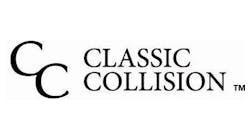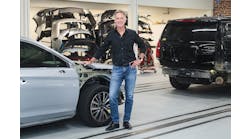Through an apprenticeship program, Dusty Clark Von Riese reinvested in forming a quality staff each time he purchased a new shop location for his operation, Ohs’ Body Shop in Kalispell, Mont. Clark Von Riese, co-owner of the shop, started expanding his business footprint in 2015 and discovered that, by purchasing other shops in the area, he had a high employee turnover rate when some existing employees at the previous collision repair shop decided to leave once new management came.
So, he turned to incentivizing as many employees as possible to stay on during the transition and worked to find people that were motivated to be in the industry.
For Bobby Cobb, he learned that expanding Today’s Collision Repair Centers in Massachusetts, required him to rethink which employees would best fit in each location. When he, co-owner of the shop, opened more than one facility, his employees wanted to take the opportunity and move into new roles.
Cobb says his road to building three locations was not always easy and factors like his market being a heavily populated area for Tesla vehicles made him turn to obtaining more certifications. He partnered with five dealerships in the area so the shop could be sent work. Yet, today his business produces $13 million in annual revenue and he isn’t putting the brakes on building more stores.
With the new year started, Clark Von Riese and Cobb outline how a shop operator can look internally to existing staff, hire new employees who fit into their culture and expand a business while not losing on revenue during the process.
Finding Motivated Employees
Clark Von Riese hires new employees through the Montana state apprenticeship program and promotes those employees from within.
He attributes his success to hiring people with a passion for the technician career, training them and then moving them through the ranks.
For every lead technician in a shop location, Clark Von Riese hires two apprentices to help that technician. Then, the shop pays for the employee’s technician education through I-CAR and provides toolboxes for them. Each month, he has his apprentices take $50 out of each of their paychecks and put that toward their toolbox. The program lasts a minimum of two years but he says most of the technicians are inspired to stay on with the shop.
“We want the techs to have the ability to go to another shop, even if it’s not ours. We want them to have a certificate of education and learn that drive to invest in their future,” he says.
Cobb looks from within to fill new positions. When he needed more employees at a new location, he sought out some of his estimators, technicians and other employees to relocate to the other location.
“You don’t want to overlook people you have and then, in the transition, they leave because of it,” Cobb says.
Carrying Over Culture
Originally, Clark Von Riese only looked for technicians with a large toolbox and the right credentials. But, he says that if an employee comes with a big ego, even if he or she is qualified, it can damage the culture of the shop.
To keep tabs on how the staff is feeling during the changes, he manages his locations by “walking around.” He’ll visit each shop and walk around the shop floor. He spends roughly eight hours talking to the staff if he needs to and then will focus on any paperwork at night.
Clark Von Riese put took his managers out of a shop office and put them directly on the shop floor. Now, the shop managers are available, along with Clark Von Riese, to their team during the day and can physically see the issues that develop or how everyone interacts with each other. They remain working on the floor using their mobile estimating carts.
Cobb’s employees work in teams, an aspect that helped the management easily transition staff over to new locations. The biggest location of the three facilities, the Malden shop, had three miniature teams within one, he says. So, when the other location opened in Stoneham, he simply took one team that included a front office estimator, back-end estimator, lead technician, parts person, and moved the team to a new store. He found that simplifying the team process at the newer locations helped the transition. The Malden location has two teams now with a customer service representative, estimator, lead technician and dedicated parts person. The original shop, located in Chelsea, uses a more standardized approach of a front office reception team and estimators facilitating the flow of work.
By keeping most of the staff the same, Cobb kept his philosophy of customer-first service and building from the ground up.
Tweaking the Setup
When Cobb can’t move all of his teams to fill every position in a new location, he hires from referrals and internal recommendations. He goes to his jobbers and vendors to find people to fit the open spots.
The next step, Cobb says, is to get all the locations certified with manufacturers. Since Cobb is in a heavily populated Tesla area, he has spent his efforts on maintaining a low cycle time, keeping customer service high and not working with any DRPs.
Von Riese focused his actions on increasing the income for his staff, as an incentive for them to stay through the transition and to produce high-quality work. Compared to other shops in his market that pay staff close to $10 or $11 per hour, Clark Von Riese pays roughly $14 per hour.
“The high turnover rates put a lot of stress on the organization,” Von Riese says. “If you’re hiring a new detailer every two months, how are you going to give a consistently good and detailed car to the customer?”
He works with a temporary employment agency that offers its services for free and provides him help when he does have to fill an entry-level position. The temp agency provides various rates offered to other technicians in the industry and then Von Riese offers at least a dollar more than those rates.

